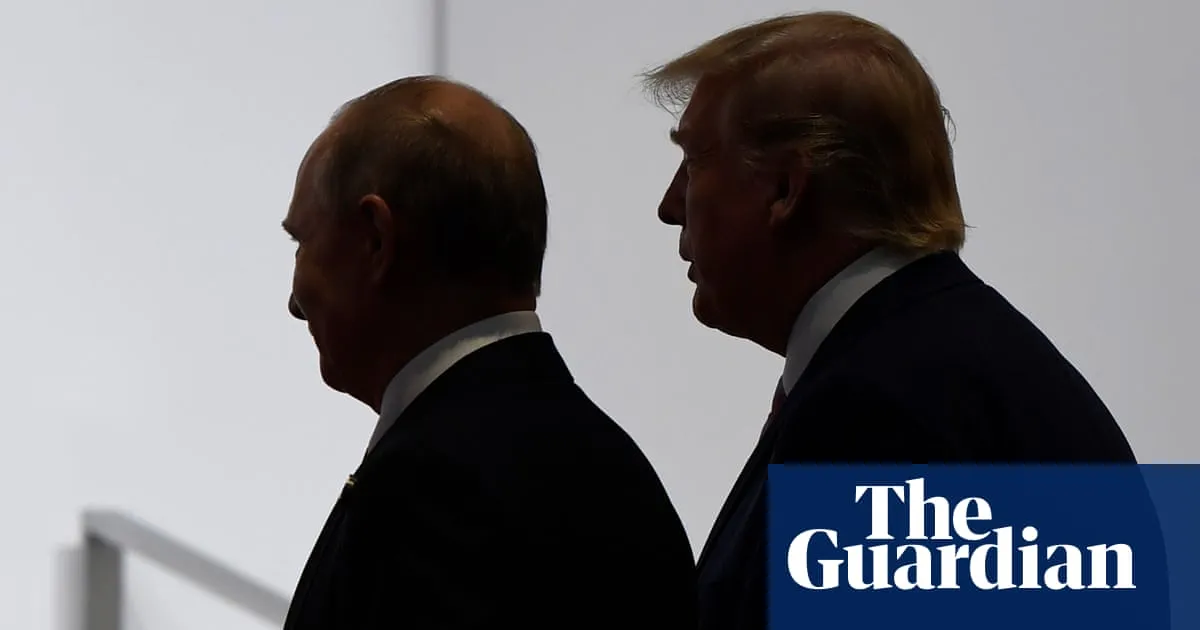
When Vladimir Putin and Donald Trump convene in Alaska, the Russian president aims to charm his American counterpart, presenting financial incentives for aligning with Moscow in the ongoing conflict over Ukraine. This hastily arranged summit, initiated at Putin’s request, marks his first invitation to meet a U.S. president on American soil since his visit with George W. Bush in 2007. The unexpected announcement has taken Kyiv and its European allies by surprise, yet for Putin, it represents a preliminary diplomatic victory: a face-to-face meeting with Trump that requires no concessions, advancing his goal of influencing Ukraine’s future through negotiations with Washington.
A pivotal aspect of Putin’s strategy will be appealing to Trump’s business instincts. On Thursday, Russian presidential adviser Yuri Ushakov revealed that the leaders would explore the “huge untapped potential” in Russia–U.S. economic relations. Ushakov stated, “An exchange of views is expected on further developing bilateral cooperation, including in the trade and economic sphere,” emphasizing the significant but largely dormant opportunities for collaboration.
Noteworthy is Putin's delegation, which includes seasoned diplomats and two key economic advisors. The presence of Anton Siluanov, Russia’s finance minister, is particularly significant, as he has spearheaded Russia’s response to Western sanctions—removal of which the Kremlin has consistently positioned as a non-negotiable condition for peace.
Putin seeks to illustrate to Trump that he is prepared to pursue peace if the circumstances are favorable, attempting to frame President Volodymyr Zelenskyy as the party prolonging the conflict. A former high-ranking Kremlin official remarked, “Putin knows Trump views the world through a business lens and will pitch a peace on his terms as the gateway to lucrative opportunities.” This strategy suggests that Putin intends to leverage Trump’s perception of global affairs to negotiate favorable terms.
As both leaders prepare for their meeting, analysts express skepticism regarding the summit’s potential outcomes. Russia’s foreign ministry reiterated Putin’s unchanged conditions for ending the war: complete withdrawal of Ukrainian forces from critical regions and a renunciation of Kyiv’s NATO aspirations—demands that Ukraine has categorically rejected from the outset. A member of Russia’s foreign policy establishment noted, “This is not a final summit where lasting peace can be achieved. Not enough groundwork has been laid for that. But it does offer a rare chance to win Trump over to Russia’s side.”
Trump has been deliberately cautious in setting expectations for the summit. On Monday, he referred to the talks as a “feel-out” to assess the possibility of a peace agreement. “I may say ‘lots of luck, keep fighting’ or I may say we can make a deal,” he stated. Following this, White House press secretary Karoline Leavitt characterized the meeting as a “listening exercise,” indicating that no specific outcomes could be anticipated.
The timing of the summit is fortuitous for both leaders. Recently, Trump’s rhetoric toward Putin had become more critical, accusing him of disseminating misinformation and warning that ongoing conflict in Ukraine would result in sanctions. Conversely, there is a growing sentiment in Moscow that European lobbying on behalf of Kyiv is beginning to impact the situation. Nevertheless, Putin remains eager to maintain communication with Trump, as the summit provides an opportunity for Trump to sidestep sanctions he had initially been reluctant to impose.
The discussions surrounding territorial concessions are particularly contentious. Trump’s envoy, Steve Witkoff, reportedly floated the idea of Kyiv ceding control of the eastern regions of Luhansk and Donetsk in exchange for a ceasefire. While Luhansk is predominantly under Russian occupation, Ukraine maintains control over significant areas of Donetsk, which would have to be voluntarily relinquished under this proposal. Initially, Witkoff suggested that Russia might be willing to return territory in southern Ukraine; however, it later became clear that Moscow had no intention of ceding any land, insisting instead that Kyiv surrender areas it currently holds.
During the summit, Putin is expected to advocate for full control and U.S. recognition of Donetsk and Luhansk as Russian territory. Kyiv continues to hold essential cities in Donetsk, such as Kramatorsk and Sloviansk, along with fortified positions that are strategically vital. All sources consulted indicate that Russia is unlikely to relinquish its holdings in southern Zaporizhzhia and Kherson, which create a crucial land corridor connecting the Donbas to Crimea.
Despite the potential for a provisional agreement on territory, achieving lasting peace remains elusive, particularly given Russia’s broader demands. Analysts suggest that Trump may be under the misconception that Putin’s primary concern is territorial acquisition, overlooking the deeper issues of Ukraine’s independence and Putin’s long-standing grievances. These root causes include demands for Ukraine’s formal renunciation of NATO membership and its “demilitarization” and “denazification,” which effectively calls for the removal of Zelenskyy.
As the summit approaches, Russian forces have intensified their offensive in eastern Ukraine, likely to increase pressure on Kyiv to concede land and bolster Putin’s negotiating stance. A political analyst in Moscow expressed that while Putin may be stalling for time, he will eventually need to make concessions. “At some stage, he will have to give something,” they cautioned. One possibility is that Putin might agree to a temporary halt on long-range strikes, yet a full ceasefire is unlikely unless his conditions are met.